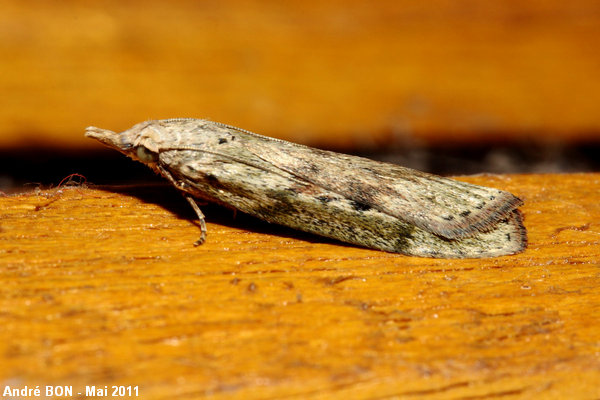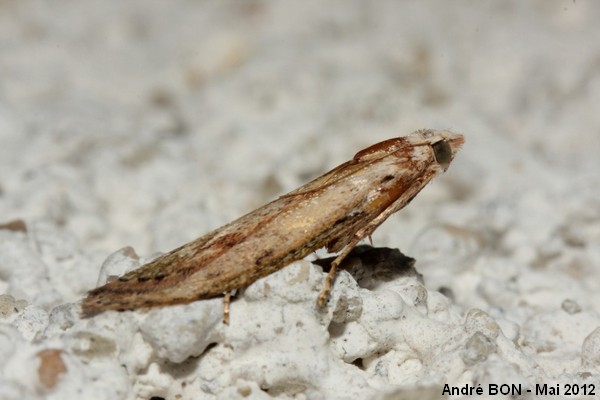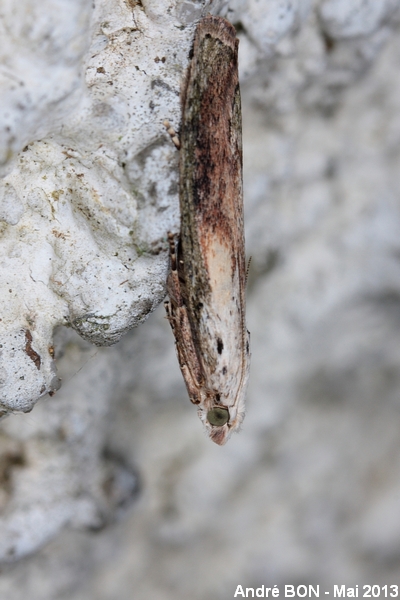



| Bee Moth (Aphomia sociella (Linnaeus, 1758)) |




|
|
Scientific name: Aphomia sociella (Linnaeus, 1758) Common name: Bee Moth Other names: Bumble Bee Wax Moth French name: Pyrale du bourdon, Gallérie des bourdons, Pyrale des nids de bourdon, Fausse teigne des nids de bourdon Order: Lepidoptera Suborder: Heterocera Family: Pyralidae Subfamily: Galleriinae Wingspan: 18 to 44mm, males are slightly smaller than females. Biotope: Woodlands, woodland edges, parks and gardens. Geographic area: Europe, introduced to other parts of the world as Asia and North America. Flight time: May to August. Number of generations : 1 Caterpillar: Yellow, brownish green on the sides. The head is dark brown to black, the legs are reddish brown. Host plant: The caterpillar is a parasite of Bumble Bee and Wasp nests. It feeds on old cells and then on new combs (food and larvae). Many caterpillars can lead to the total destruction of the colony. |
The Bee Moth is sexually dimorphic. Males are a creamy colour, especially near the head and on the basal area. The edges of the wings are reddish. The wings are crossed by two dark wavy lines. Females are a greyish colour with greenish brown scales. They also show the same wavy cross lines. The fore wings show a rounded black discal spot and another smaller black spot between the large one and the first cross line. Bee Moths are attracted to light. They over winter at the pre-nymphal stage, inside a cocoon in the wasp or Bumble Bee nest. Imago's will emerge at next spring. |
| [To know more about the Bee Moth] [Next picture] [Top] |

|
I have found this moth to belong to the Bee Moth species three years after having shot the picture. You must never give up. This male, attracted to light, has entered into the house. |
| [To know more about the Bee Moth] [Next picture] [Previous picture] [Top] |

|
After one male, here is one female which is a more greyish colour. |
| [To know more about the Bee Moth] [Next picture] [Previous picture] [Top] |

|
I have observed this male on the outside wall of the house. I am used to often observing Bee Moths landed like this, the body held straight and oblique relative to the support. |
| [To know more about the Bee Moth] [Previous picture] [Top] |

|
Here is the real position with the right orientation. The Bee Moth is landed head down (the previous picture is rotated by 90 degrees for a better display). |